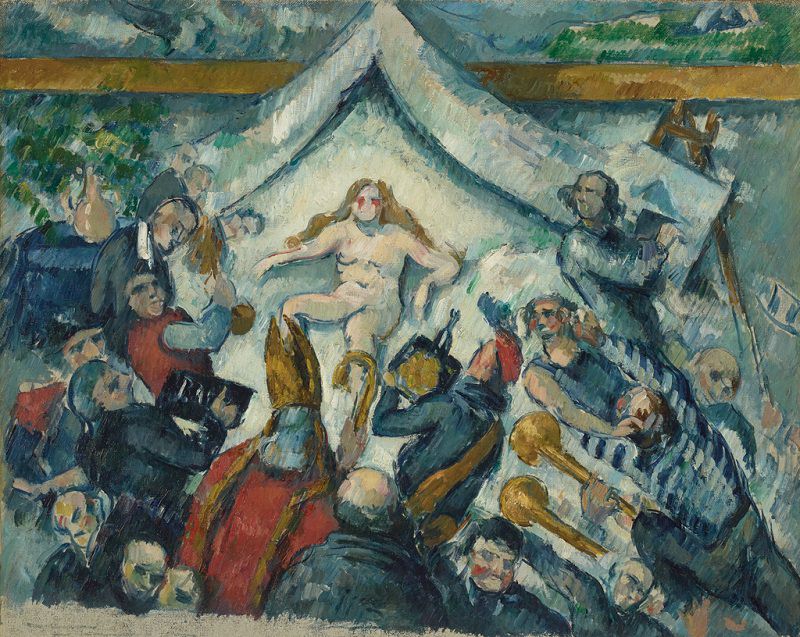The Eternal Female, 1875 by Paul Cezanne
To control his wild imagination and bubbling sensuality revealed in his youthful letters and in his early paintings. Cezanne submitted himself to a dual discipline. He inscribed his female allegorv in
the yoke of a triangular composition reinforced at the summit by the shape of a baldachin. The composition in its own manner is almost as strict and symmetrical as a "Coronation of the Virgin" by
Fra Angelico. Cezanne arranges his figures around the nude woman, reducing perspective to a minimum and closing the whole design by a wall. The protagonists are crudely sketched. "Cezanne's figures,"
noted Pierre Francastel, "cease to be treated as human references in the center of a natural setting and become the elements of a homogeneous space."
The Eternal Female represents, at the foot of a triumphant nude, a group of worshipers including a bishop and a painter who symbolize various arts and crafts. The crude treatment, the violence
of the brushstrokes could not help but seem intolerable to Cezanne's contemporaries, and his work was especially ridiculed during the Impressionist exhibitions of 1874 and 1877. The painter was
resentful and discouraged and spent more and more time in his native South of France. "To work unworried by anyone and to become strong, this is the artist's goal," he wrote some years later.
